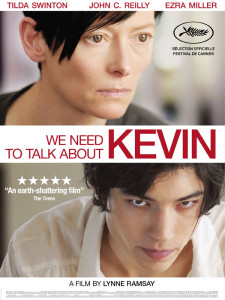Last year I had the pleasure of interviewing Kimya Dennis, Assistant Professor at Salem College, who was teaching the sociology course, The Childfree, for the first time, and was using my book, The Baby Matrix, as part of the curriculum. She is now in the midst of teaching this course for the second time, and graciously let me ask about how it is going. Check it out:
Q&A with Kimya Dennis, Ph.D.
From what you learned as a result of teaching the Childfree course the first time, did you change or alter the course goals and/or curriculum structure at all for the second class that is currently underway? If so, how, and what inspired this from teaching the class the first time.
Teaching the course last year taught me that students with diverse backgrounds will take this course. There tends to be at least one student in the course who already has a child(ren) and the remainder are students who plan to have children, are undecided, or do not want to have children. This has taught me to provide course materials with a childfree framework to introduce students to the concept of “pronatalism.”
The course operates from the foundation of NOT having children. We dissect and challenge the notion of having children; whereas most environments operate from the foundation of having children and counter points are widely criticized. This approach is not to sway students away from having children but instead to challenge humans’ concept of “normal” and “normative” as opposed to “deviant” and “abnormal.” It can be argued that many childfree people, and also many childless people, spend more time thinking about and even discussing the topic of having children and weighing pros and cons as compared to the average person who has children. This is something I address more this semester than was addressed last year.
I also address how the childfree are not a monolithic people. Yes, we have some commonalities, being childfree is perhaps the primary commonality, but there is a range of opinions on various topics, different perspectives, different lifestyles, and so forth. There is this misconception even among college students that older adults who do not have children completely live a life of luxury and leisure in which we party nonstop and practically have no cares in the world. Although not having children removes some restrictions and obligations, there are childfree people who take care of family and friends and have many other personal responsibilities and professional responsibilities.
I want to challenge the notion that adulthood is not fully captured until someone has children. I also challenge the notion that maturity, responsibility, and being “busy,” “exhausted,” or “stressed” are only accomplished through having children.
What textbooks, articles, etc. are you having students read and discuss? How is The Baby Matrix being used this time?
This semester the Introduction, Chapter 1 and Chapter 2 of The Baby Matrix chapter is used with other readings to provide students an explanation of pronatalism and practical examples of how reproduction is generally part of human conscious and subconscious.
The Baby Matrix illustrates how most environments define adulthood, particularly womanhood, and family through children. This semester I am using Aralyn Hughes’ Kid Me Not which is helpful in getting students to see childfree across age. Students see there are historical and contemporary issues captured in reading Kid Me Not, such as birth control and reproductive rights and there are intersecting dynamics of gender, age, sexual identity, sexuality, race and ethnicity, physical condition, mental condition, and other cultural aspects. These aspects exist and influence humans even when we do not overtly address cultural variations and these cultural aspects. There is no such thing as an objective or neutral way to address reproductive choices and “the childfree.” Reproductive choices and the childfree life vary across cultures.
The first weeks of the semester are always spent discussing introductory readings to concepts and social dynamics such as “social construction,” gender, race, religion, family, physical and mental health, and capitalism and the economy. The course begins in this manner to make sure everyone has a foundation through which to discuss reproductive rights and reproductive decisions.
Students also read:
“Conspiracy Beliefs about HIV/AIDS and Birth Control among African Americans: Implications for the Prevention of HIV, Other STIs, and Unintended Pregnancy” (Bird and Bogart 200 5)
5)
“Through the Lenses of Gender, Race, and Class: Students’ Perceptions of Childless/Childfree Individuals and Couples” (Koropeckyj-Cox, Romano, and Moras 2007)
“Comparing Characteristics of Voluntarily Childless Men and Women” (Waren and Pals 2013)
Students watch: a Youtube documentary titled “Demographic Winter: The Decline of the Human Family”; the movie, We Need to Talk about Kevin; three episodes of Sex and the City: “Catch 38,” “The Babyshower,” and “A Woman’s Right to Shoes.”
What has been the nature of the discussions / what students learning so far in the course this time?
Students are learning the everyday complexities of reproductive resources and reproductive freedoms. Sometimes we read comments sections of childfree Internet-based articles and commenters say things such as “so what you don’t want kids…don’t have them…I don’t care.” First off, it is always baffling when people announce their lack of interest but it also minimizes the complexities of this issue. If it was simply a matter of not wanting children and, therefore, not having children with no need for announcement or discussion, being childfree by choice would have been a common practice across societies and across cultures for generations. There would not be reproduction by force, by coercion, by obligation, or by lack of birth control.
But we know this issue is more complex than that and it is not as obvious as people often like to pretend. Students have learned the complexities across cultures and the strange things people often say in response to reproductive choices that conflict with the norm. The childfree tend to call these “bingos.” Discussions are interesting as students connect the videos and other visual illustrations to the readings. The key is keeping the course materials and discussions organized so the complexity of the issues can be captured without losing focus. This also requires students being willing to learn things that might challenge what some of them have been taught all their lives.
Are you doing the “Conference on Reproductive Rights and Freedoms this time”?
Yes, students are doing “The Reproductive Rights and Choices/Freedoms Conference.” This is an in-class conference in which I form student groups and students use a real conference format (I give them the links to my professional conferences). Groups have to choose a theme and a session chair. Members of groups must choose a topic that pertains to some aspect of reproductive rights/freedoms/choices and submit an abstract to the session chair. The session chair organizes the session and members do their research and create a presentation. Students do the presentations using a conference session format at the end of the semester. Last year the topics and presentations were so interesting that students requested to learn more about the topics. Groups requested access to other groups’ research so they could learn more after the semester ended. Hopefully that will also be the case this semester.
Thank you, Kimya! We will hear about this Conference assignment and more at the end of the semester!
Kimya N. Dennis, Ph.D. is an Assistant Professor and Coordinator of Criminal Studies at Salem College in Winston-Salem, North Carolina. Her sociological interests include the childfree and definitions of “family”, the intersection of race and gender, and the living wage. Her criminological interests include interdisciplinary study of suicide, mental health, and Crisis Intervention Training (CIT) for law enforcement. For information on her studies, Contact Kimya at [email protected].






